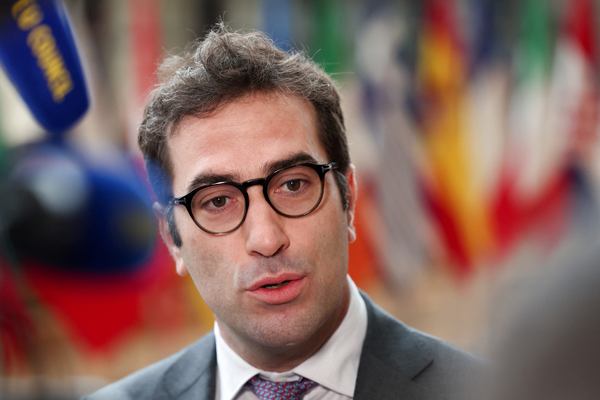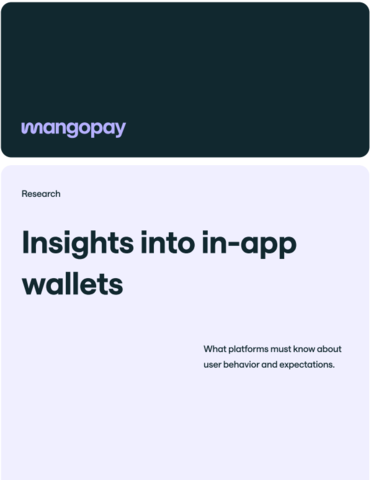How a newly digitalised Latin America is modernising cash and the local payments ecosystem
Sponsored by Ebanx
For a considerable part of the world, the next big payments trends are going digital. Instant payments, wearable devices, contactless payments, QR codes and Bitcoin are cited as the future of the industry – which is not necessarily wrong.
However, the payment trend landscape is a little different in Latin America, one of the fastest growing regions for e-commerce worldwide, where millions of people made their first online purchase in the last year. As overall digitalisation and connectivity rises in the region, payment digitalisation takes on a form unique from other markets. Perhaps surprisingly, in Latin America, the most reliable and offline payment method – cash – has been crucial in giving access to the digital world.
In a region of almost 650 million people, where half are unbanked or underbanked, according to the World Bank’s data, the importance of cash is evident – even with the massive growth of financial inclusion brought by the Covid-19 pandemic.
As millions were ordered to stay at home, digital banking and payments saw unparalleled growth in Latin America. Governments created digital accounts in state-owned banks, in order to distribute emergency aid. Many were financially included, having a digital account for the first time. And even under a deep economic crisis, e-commerce had an 8.5 per cent jump in Latin America, with an increment of almost 25 per cent in the number of online consumers, according to EBANX’s Beyond Borders study.
Yet all of this happened while keeping the long-standing cultural preference in Latin America of paying with cash intact. This is the breakthrough: not only is there a record, fast adoption of digital payments, Latin America is also “digitizing cash”.
The new face of cash in LatAm
Cash is no longer solely synonymous with paper money. It has evolved to include paying with cash vouchers through your smartphone and/or using a bank application. Or putting cash into a digital wallet – and then using it to make a purchase through an international website, sending money to a relative, ordering a pizza, or even splitting your bills in instalments. When cash takes on a digital form, the limitations and barriers for the use of money are removed.
Let’s take a look at an example of this in Brazil. Boleto Bancário, a cash voucher that is one of the most widespread payment methods in the country, can now be paid for through a bank application, without the need for cash. In fact, EBANX’s Beyond Borders study showed that the preference to pay for the voucher digitally has grown: most Brazilian consumers (56 per cent) say they actually prefer to pay electronically, a growth compared with the previous year.
There is also an emerging hybrid use of this type of voucher: you generate the voucher digitally, on e-commerce, and then pay it in cash. This is what happens in Mexico, for example. A consumer can buy clothes on an international website using OXXO, a cash voucher widely popular in Mexico. Traditionally one can go to any of the 19,000 convenience stores across the country and pay for a purchase using paper money. When you digitise this method, the physical process works seamlessly with the digital element. The barcode generated from the cash voucher can be scanned, the physical money is paid to the cashier, and boom – the e-commerce order is fulfilled as cash is digitalised and sent across the world to pay for a T-shirt. It is a wonderful new hybrid world.
Why the fast adoption
For many people, the process of blending the physical and the digital is a necessity. Many Latin Americans are living under imposed digitalisation, due to quarantine measures, as banks and other locations to pay cash in person have been closed or limited to the public. According to Beyond Borders study, at least 52 millions of Latin Americans bought online for the first time during the pandemic, including basic items such as rice, flour and kitchen oil. High and growing levels of internet penetration, especially due to smartphone popularity, have also contributed to this fast digitalisation of consumption in LatAm.
In this circumstance, cash payment methods, whether physical or digital, became a safe alternative for those who didn’t have the habit of buying online, those who couldn’t count on any other payment method, or even for those who had been distrustful of digital payments due to data theft or credit card fraud (which, unfortunately, is still common in Latin America when compared with other countries).
We have seen this trend at home. EBANX processes payments in nine countries in Latin America, for global companies such as Spotify, Uber, and Amazon. Historically, alternative payment methods, including cash-based ones, account for around 29 per cent of our total volume of payments in e-commerce in the region’s six main markets. In 2020, however, there was an impressive growth of these methods, with peaks of up to 40 per cent of our total processed volume in retail merchants in Brazil, for example, as shown in our Beyond Borders study.
We are not the only ones to witness that. In Colombia, for example, reports show that cash usage grew more than 32 per cent during the pandemic, according to a study from Banca de Las Oportunidades. At the same time, mobile banking registered a 68 per cent growth in number of operations during the first half of 2020. Once again, cash and digitisation do not compete with each other in Latin America, but instead go hand in hand.
Looking ahead for the future of payment digitization in LatAm
What we are seeing in Latin America is the emergence of a hybrid payment system. While cashless methods are the bright shiny objects in other parts of the world, in LatAm what is crucial is making sure that, as the digital landscape evolves and modernises, so do the most trusted payment methods. In this process, it’s important to create access for the vast majority of the population – whether they want to pay in cash (even via e-commerce) or digitally.
Global brands that want to seize the potential of Latin America should leverage this flexibility and offer a wide range of local payment options. While digital payments have been on the rise, with the surge of native digital wallets and the launch of instant payments in Brazil and Mexico, for example, cash-based payments will likely keep evolving to remain a key asset in the region, due to their adaptability and longevity.
Latin America’s e-commerce market will continue to grow at a fast pace, and is expected to grow by 19 per cent in 2021, according to Beyond Borders. Consumer digital habits should remain in the post-pandemic scenario, such as a general increase in online shopping and the use of mobile devices on e-commerce. But cash is not dead – at least in Latin America. It will keep adapting and being used in the “Latino way”.
by João Del Valle, co-founder and COO, EBANX

Business Reporter Team
Most Viewed
Winston House, 3rd Floor, Units 306-309, 2-4 Dollis Park, London, N3 1HF
23-29 Hendon Lane, London, N3 1RT
020 8349 4363
© 2025, Lyonsdown Limited. Business Reporter® is a registered trademark of Lyonsdown Ltd. VAT registration number: 830519543






